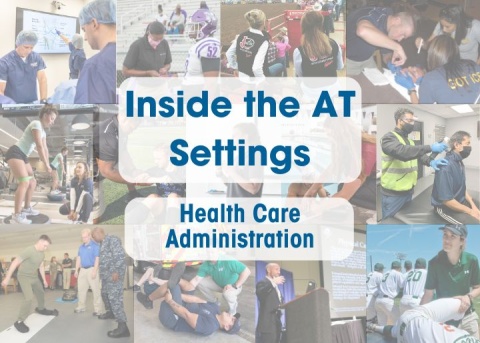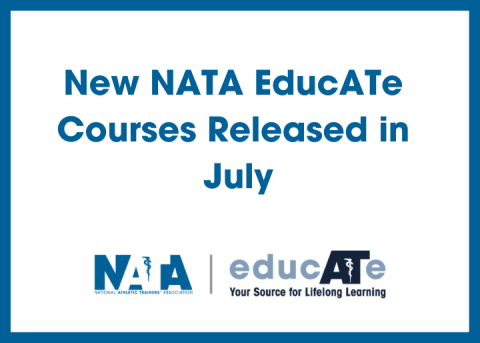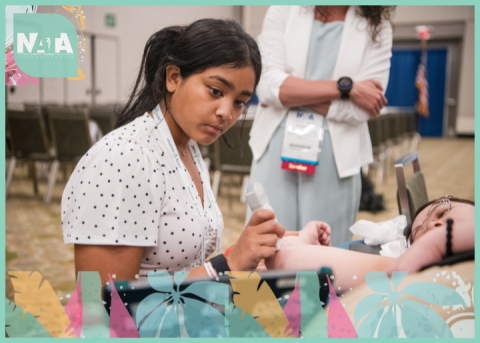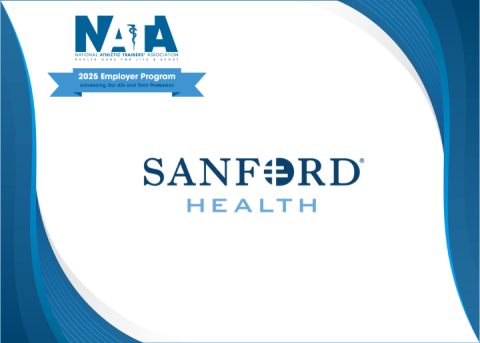
Introduced in the April NATA News, this NATA Now article series provides insight into the different athletic training settings as well as information athletic training students and interested ATs need to know. The series also provides tips from members on how to succeed in each setting.
Nicole Fillingame, MS, LAT, ATC, sports medicine outreach and athletic training manager at Children’s Mercy Kansas City (CMKC), has worked in the health care administration setting for 15 years. Fillingame, who started her career as an athletic trainer in the secondary school setting, said she was attracted to CMKC because it aligned with the next step in her personal goals.
“I applied, got the job as the first AT hired at CMKC,” Fillingame said. “Here I am, almost 15 years later working at the same hospital that has had tremendous growth adding ATs and creating a successful outreach program.”
Keep reading as Fillingame provides insight into the health care administration setting.
Typical Makeup of Your Population
Middle and high school athletes with some collegiate level coverage
Non-AT-Related Skills/Education/Certification Required or Helpful for Your Setting
I don’t have any additional certifications applicable to the health care administration role, but there are a few to consider that might be helpful depending on the organization you work for or requirements according to job descriptions. Additional education, such as a Masters in Health Care Administration or a Masters in Business Administration, may be helpful in these health care administration positions, but also may set up the AT for future opportunities within an organization. All of it depends on how ATs report up through an organization.
Understanding organizational structure is imperative to ATs working in health care administration roles so they can advocate for advancement and additional roles. Other certifications or offerings that could be helpful include Lean Sigma Six courses, leadership courses and understanding human resources concepts/processes – hiring, termination, supporting staff, advocating for pay increases, performance evaluations, etc.
Common Injuries Observed or Encountered in Your Setting
While an AT serving in a health care administration role typically is not involved in patient/athlete care, it’s important to keep your skills fresh and lead by example. Staying competent in AT skills learned during your education is important so you can fill in for your staff if you are managing ATs. ATs serving in health care administration roles who manage others who aren’t ATs should know how to perform those roles to be able to relate to staff, remove barriers and understand the frontline work being done. For me, our secondary school ATs see sprains, strains, concussions, fractures, dislocations, etc. Knowing the injuries your staff are seeing in practices and games is important to help your staff stay updated on standards of care and best practices.
Another consideration for ATs serving in health care administration roles is making sure your staff remain competent in skills acquired in their education programs, especially those that are high-risk, low-volume injuries. If you don’t see an injury often, it’s hard to keep skills fresh. For example, dislocations are hard to predict and practice because you don’t know how often they will occur. As an AT managing other ATs, it’s your responsibility to develop competencies for your staff to mitigate risk and that they remain confident in performing those skills. Additionally, remember that not all ATs have the same level of education and training depending on when they obtained certification from the Board of Certification for the Athletic Trainer.
Traits of a Successful AT in Your Setting
Stay involved in state, local and national athletic training organizations because they are going to have the best resources to take care of our athletes and patients as well as provide the latest in standards of care and best practices in the AT profession. Networking is huge for ATs in health care administration roles because you can always learn from others and what they’re doing at their organizations to help you work through barriers and bring back new ideas to continue advancing the profession at your own organization. Being a part of our state, district and national AT associations helps identify mentors and contacts for continual collaboration. Assume positive intent, ask curious questions, be a servant leader and pour into the staff you manage by making their professional development your priority! Stay passionate about advancing the AT profession in your organization. While it may be a “no” at first, it can turn into a “yes” later, so be patient when bringing new ideas forward to your organization.
Misconceptions About Your Setting and/or Patient Population
As someone who has managed a variety of ATs with different levels of experience and service years in an organization, ATs come in with a variety of expectations/perceptions of how they should be allowed to practice at the top of their scope. It’s wonderful our profession has come so far with the skills being taught in the AT education programs, but not all organizations are up to speed with the skills of ATs in 2024. We have this large scope of practice we obtain through our BOC certification that then depends on your state practice act. From there, taking your practice act to your organization and reviewing it with them may also determine what skills they are willing to allow ATs to perform. Consider these things and know that you may not always practice at the top of your scope, but make it a priority to advocate for that as long as fits within the state practice act.





